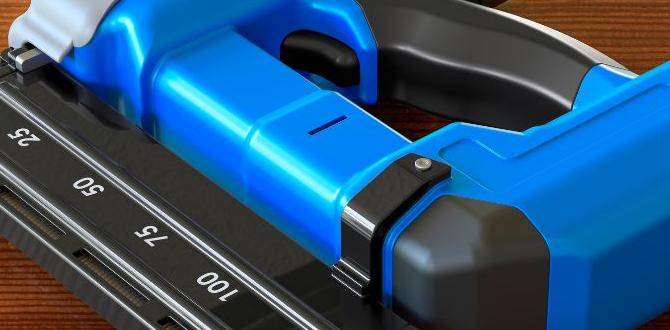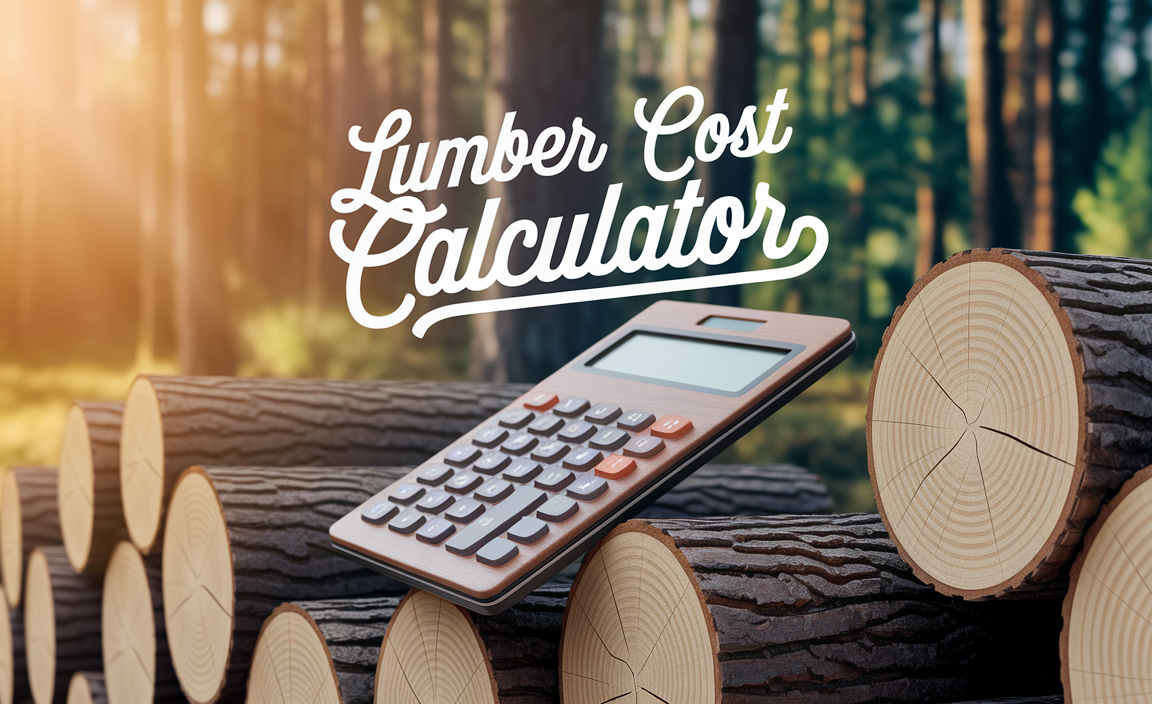Yes, cordless nail guns can absolutely replace air nailers for many DIY projects and even some professional tasks, offering greater freedom and eliminating the need for a compressor. However, the best choice depends on your specific needs, budget, and the type of work you’ll be doing.
Hey there, fellow DIYers and woodworkers! Jack Shaffer here from Nailerguy. Are you standing in the tool aisle, staring at both air-powered and cordless nail guns, wondering which one is right for your next project? It’s a common puzzle, and honestly, it can be a bit confusing. Air nailers have been the workhorses for ages, but these new cordless models are really making a name for themselves. You might be asking, “Can cordless nail guns really do the job as well as my old reliable air nailer?” The good news is, you’re in the right place! We’re going to break down everything you need to know to make that decision. Get ready to untangle the air hose and explore the freedom of cordless power. We’ll look at what makes each type tick, who they’re best for, and when a cordless nail gun is the perfect replacement for an air nailer. Let’s get nailing!
Table of Contents
Can Cordless Nail Guns Replace Air Nailers? The Big Question Answered
This is the million-dollar question, isn’t it? Can these battery-powered marvels truly step into the shoes of the compressor-driven air nailers we’ve relied on for so long? The short answer is a very strong “yes, for many applications.” For a huge number of DIY projects, home renovations, and even light to moderate professional use, cordless nail guns offer a compelling alternative that often surpasses the convenience of their air-powered counterparts. They provide portability, speed, and power without the hassle of air hoses, compressors, and tangled extension cords. However, it’s not a simple one-size-fits-all situation. Understanding the nuances will help you decide if a cordless nail gun is the right replacement for your needs.
Understanding the Two Main Types of Nail Guns
Before we dive into the replacement debate, let’s get a clear picture of what we’re working with. Nail guns, whether powered by air or battery, drive nails into wood or other materials. The main difference lies in how they generate the force to drive those nails.
1. Air Nailers (Pneumatic Nail Guns)
These are the traditionalists. Air nailers work by using compressed air stored in a tank (the air compressor) to power a piston that drives the nail.
- How they work: An air compressor builds up pressure. When you pull the trigger, a valve releases a burst of this compressed air, pushing a plunger down to strike the nail head.
- What you need: An air compressor, an air hose, and the nail gun itself.
- Pros:
- Generally more affordable to purchase initially (the nail gun itself).
- Lighter weight for the tool itself, as the motor and compressor are separate.
- Consistent power delivery.
- Excellent for high-volume nailing tasks.
- Wide variety of specialized models available.
- Cons:
- Require a bulky, noisy air compressor.
- Need an air hose, which can be a tripping hazard and limits mobility.
- Setup and cleanup can be time-consuming.
- Air leaks can reduce efficiency.
- Less portable for tight spaces or remote locations.
2. Cordless Nail Guns
These are the modern warriors, powered by rechargeable batteries and often incorporating their own internal mechanisms to drive nails.
- How they work: Most cordless nail guns use a combination of a small battery-powered motor and a compressed air spring or a gas cartridge.
- Battery-Powered Firing: A small motor spins a flywheel, compressing a spring. When you pull the trigger, the spring is released to drive the nail.
- Fuel Cell/Gas-Powered: A small, disposable fuel cell (like a propane/butane mix) is inserted. A spark ignites the fuel, creating a rapid expansion of gas that drives the nail. The battery in these models is typically only used for the spark ignition and fan.
- What you need: The cordless nail gun, rechargeable batteries, and a charger. (For fuel cell models, you’ll also need fuel cells).
- Pros:
- Unmatched portability and freedom – no cords or hoses!
- Quick setup and cleanup.
- Ideal for small jobs, punch lists, or working in tight spaces.
- Quieter operation than most air compressors.
- No worrying about air leaks.
- Cons:
- Higher initial cost for the tool and batteries.
- Battery life can be a limitation for very long jobs or heavy use.
- Can be heavier overall due to the integrated battery.
- Power might be slightly less consistent than top-tier air nailers in some models, especially when batteries are low.
- Fuel cell models add recurring costs.
When Can Cordless Nail Guns Replace Air Nailers?
The short, sweet answer to “Can cordless nail guns replace air nailers?” is that for most DIY projects, small construction jobs, and renovations, the answer is a resounding YES! The convenience factor alone makes them incredibly appealing. Here’s a breakdown of situations where cordless truly shines as a replacement:
DIY Home Projects & Renovations
If you’re tackling projects around the house, like installing baseboards, crown molding, building shelves, framing small features, or putting up wainscoting, a cordless nail gun is often the superior choice. You don’t have the hassle of dragging out the compressor, wrestling with hoses through doorways, or dealing with the noise. The quick-start nature of cordless is a huge win for weekend warriors.
Working in Tight or Awkward Spaces
Ever tried to nail in a tricky corner or inside a small closet with an air hose? It’s a pain! Cordless nailers give you the freedom to maneuver without getting tangled. This makes them invaluable for tasks like installing trim inside cabinets, working on attic renovations, or any situation where mobility is key.
Small to Medium Framing Jobs
Many modern cordless framing nailers are powerful enough to handle 2x4s and other common framing lumber. While a busy professional framing crew might still prefer air for the sheer volume and potentially lower per-nail cost, for a DIYer building a shed, a deck frame, or a small addition, a cordless framing nailer can be a fantastic, self-contained solution.
Punch Lists and Tidy-Up Work
Got a few nails to set after doing some work with an air nailer? Instead of lugging out the compressor, a quick grab of a cordless finish or brad nailer is far more efficient for those last-minute fixes or small additions.
Outdoor Projects (Decking, Fencing)
Building a deck or putting up a fence? You’re likely working away from your garage or workshop. A cordless nail gun eliminates the need to run long air hoses across your yard, making the job more streamlined and safer. Some models are even designed for exterior use.
When It Might Be Better to Stick with Air
While cordless is fantastic, there are still scenarios where an air nailer might be the better or only option:
- High-Volume, Continuous Nailing: If you’re doing extensive production framing or building dozens of identical items in a factory setting, the continuous power and lighter tool weight of air might still win.
- Extremely Tight Budgets: The upfront cost of a good cordless nail gun, especially one with multiple batteries, can be significantly higher than a basic air nailer kit.
- Very Cold Climates: In extreme cold, battery performance can be reduced. Air tools may perform more reliably in sub-zero temperatures, though it’s worth noting that extreme cold can also affect air compressors and hoses.
- Already Own a Compressor: If you already have a good air compressor that you use for other tools, extending its life with an air nailer might be more economical.
The Technology Behind Cordless Nail Guns
It’s fascinating how battery power is now driving nails effectively. Cordless nailers have seen massive advancements in technology, making them more powerful and reliable than ever before.
Battery-Powered Firing Systems
The most common type of cordless nailer uses a battery to power a sequential system. Here’s a look at the main drivers:
- Motor and Flywheel: A powerful electric motor spins a flywheel very rapidly. This flywheel stores rotational energy. When you pull the trigger, a mechanism is released, and the momentum from the flywheel drives a piston to send the nail home. Think of it like a miniature, high-speed internal hammer.
- Compressed Air Spring: Some models use the battery-powered motor to actually compress a small air spring. When the trigger is pulled, this spring is released to drive the nail. This offers a more traditional feel of pneumatic power but without the external compressor.
These systems are efficient, allowing for a good number of nails per charge. For detailed information on power sources and their impact on tool performance, you can often find helpful guides from reputable tool manufacturers or industry safety organizations. For example, the Occupational Safety and Health Administration (OSHA) provides guidelines for tool safety that apply broadly to all powered equipment, including the importance of understanding your tool’s power source.
Fuel Cell Technology (Less Common Now)
Older or specialized cordless nailers might use a “fuel cell” or gas system. A small, disposable canister of liquefied fuel is inserted into the tool. When you fire the nail, a small battery ignites a spark that ignites this fuel, creating a small explosion that drives the nail. These were revolutionary but had drawbacks:
- Recurring cost of fuel cells.
- Potential for unpleasant fumes.
- Performance could be affected by temperature.
- Many manufacturers have shifted focus to pure battery-electric systems due to their simplicity and environmental advantages.
Types of Cordless Nail Guns and Their Uses
Just like air nailers, cordless models come in various types, each designed for specific tasks. Knowing these will help you pick the right one to replace an air nailer for a given job.
1. Cordless Framing Nailers
These are the heavy-hitters, designed for structural work like building walls, rafters, and floor joists. They typically drive larger nails (2.5″ to 3.5″ long).
- Best For: Sheds, decks, small additions, framing walls.
- Can it replace air? Yes, for DIY and moderate construction. Look for models that can handle 3-inch nails and have good battery life.
2. Cordless Finish Nailers
These are workhorses for trim work. They drive smaller, thinner nails (typically 1.5″ to 2.5″ long) with a small head, leaving a minimal hole that’s easy to fill.
- Best For: Installing baseboards, crown molding, door and window casings, chair rails.
- Can it replace air? Absolutely! This is one of the most popular categories for cordless replacement.
3. Cordless Brad Nailers
Even thinner and smaller than finish nails, brad nails (typically 0.75″ to 1.5″ long) leave very small, easily concealable holes. They offer less holding power.
- Best For: Attaching thin trim, delicate moldings, picture frames, craft projects, attaching small decorative elements.
- Can it replace air? Yes, for all these light-duty applications.
4. Cordless Straight vs. Angled Nailers
This applies to both finish and framing nailers. A straight nailer drives nails at a 90-degree angle, while an angled nailer drives them at an angle (commonly 20, 21, or 30-34 degrees). Angled nailers are crucial for getting into tight corners or toenailing studs.
- Tip: Choose an angled nailer if that’s a common task for you, as it increases your reach significantly.
5. Cordless Roofing Nailers
Designed for speed and efficiency in laying shingles. They drive short, wide-headed nails and often have a depth adjustment feature. While available in cordless, many professionals still opt for air due to the sheer volume of nails required for a large roof.
6. Cordless Siding Nailers
Specialized for installing siding materials like vinyl, fiber cement, or wood. These are robust and optimized for the task.
Cordless vs. Air: A Direct Comparison for Your Decision
To help you visualize the trade-offs, let’s put them side-by-side based on key factors:
| Feature | Cordless Nail Gun | Air Nailer (with compressor) |
|---|---|---|
| Portability & Freedom | Excellent (no hoses or cords) | Limited (requires compressor and hose) |
| Setup Time | Very fast (insert battery, ready) | Moderate (set up compressor, connect hose) |
| Noise Level | Moderate (tool’s motor/firing mechanism) | High (compressor is noisy) |
| Power Delivery | Consistent, especially with good batteries. May slightly decrease as battery drains. | Very consistent, direct line to compressed air. |
| Initial Cost | Higher (tool + batteries + charger) | Lower (tool itself, but compressor adds significant cost) |
| Operating Cost | Electricity for charging batteries. Fuel cells for some models. | Electricity for compressor. Potential air leaks. |
| Weight of Tool | Can be heavier due to integrated battery. | Generally lighter tool, but compressor is heavy. |
| Best For | DIY, trim, quick jobs, tight spaces, mobile work. | High-volume production, workshops, consistent power needs, budget-conscious tool acquisition (if compressor already owned). |
| Potential Downsides | Battery life, battery cost, can be heavier. | Hoses, compressor noise/bulk, setup time, air leaks. |
Choosing the Right Cordless Nail Gun to Replace Your Air Nailer
So, you’ve decided a cordless nail gun is the way to go! Fantastic! Now, how do you pick the right one? Consider these points:
1. Battery Platform
This is huge! Most major tool brands have their own battery systems (e.g., DeWalt 20V MAX, Makita 18V LXT, Milwaukee M18). If you already own other tools from a brand and have their batteries and chargers, it makes immense sense to buy a nail gun from that same line. This saves you a significant amount of money and means you can swap batteries around.
2. What Nails Does It Drive?
Match the nail size and type to your projects.
| Nail Type | Typical Length | Diameter | Primary Use |
|---|---|---|---|
| Framing Nails | 2.5″ – 3.5″ | .113″ – .162″ | Structural framing, decks, sheds. |
| Finish Nails | 1.5″ – 2.5″ | .077″ – .092″ | Trim, molding, cabinetry. |
| Brad Nails | 0.75″ – 1.5″ | .034″ – .050″ | Delicate trim, craft, fine woodworking. |
| Panel Nails | 1″ – 1.75″ | .062″ – .072″ | Attaching paneling, thin plywood. |
3. Power Needs & Depth of Drive
For framing, you need power to sink substantial nails into hardwoods. For trim, you need precision and adjustable depth so you don’t overdrive nails and damage the wood surface. Most good cordless nailers offer depth



